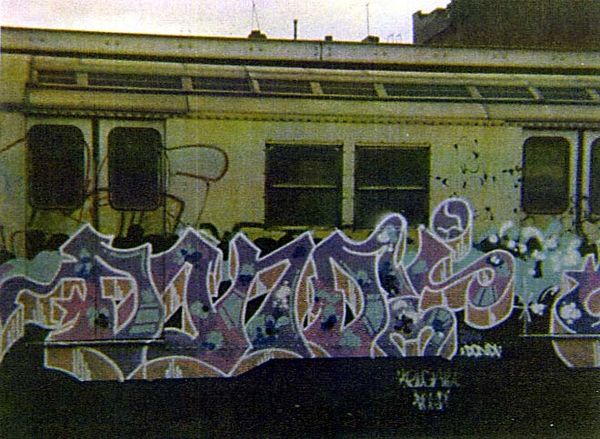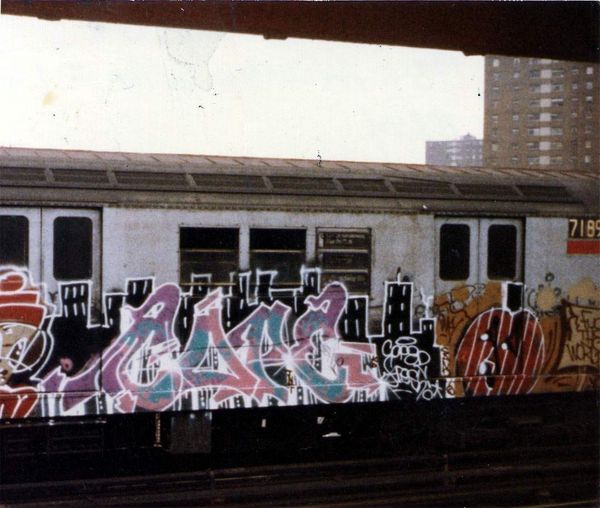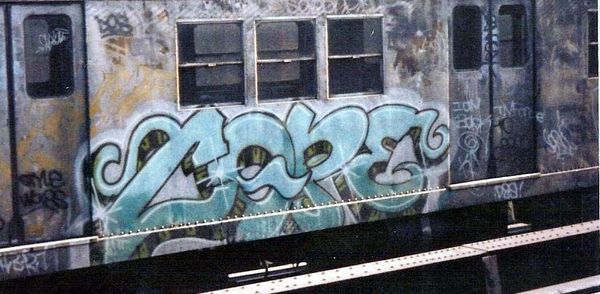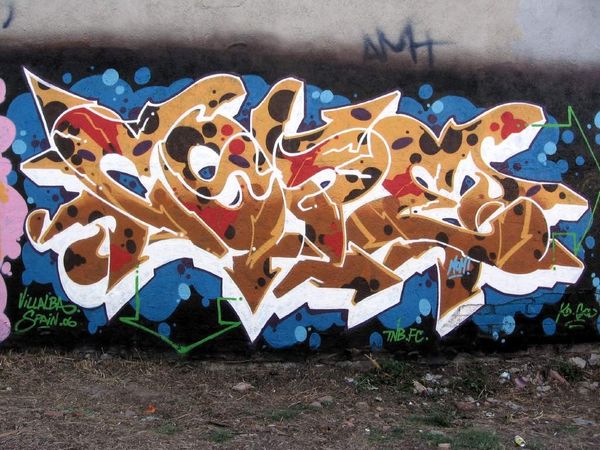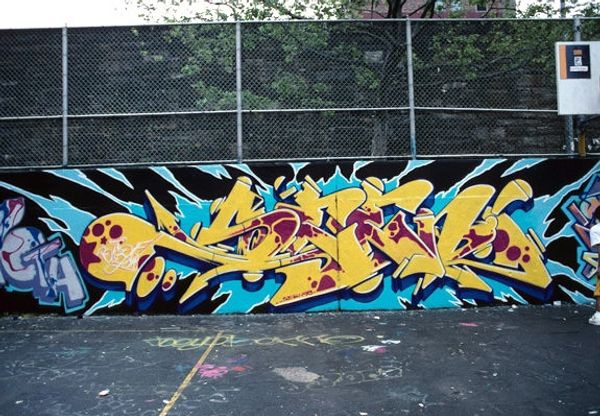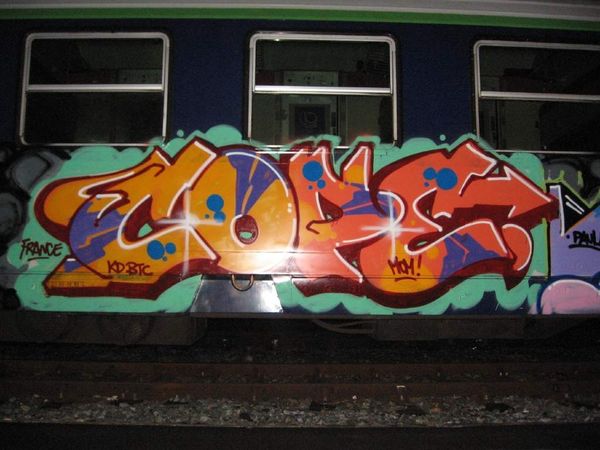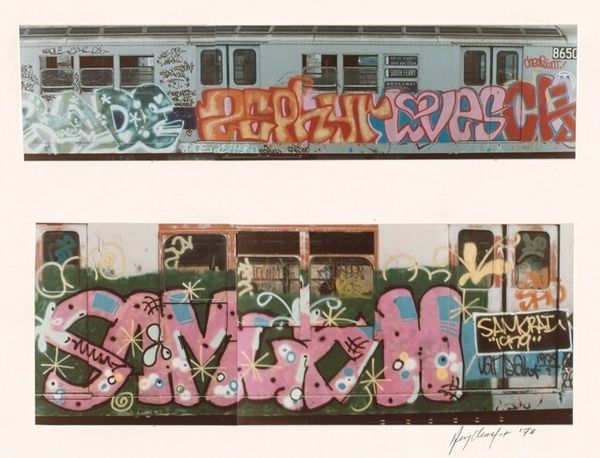
painting
#
graffiti
#
street-art
#
painting
#
graffiti art
#
street art
#
graffiti-art
#
digital-art
Copyright: Dondi,Fair Use
Editor: This is “Asia” by Dondi, a graffiti painting of an entire subway car. The color palette is so vivid, and the lettering has such an interesting shape and structure, which gives it a rebellious mood. What do you see in this piece? Curator: I see more than just rebellious lettering; I see a potent act of reclaiming public space. Subway graffiti like "Asia" became a powerful visual language, especially for marginalized communities during that time. Editor: So it was a form of protest? Curator: Absolutely. Consider the social landscape of the 1970s and 80s in New York City. What populations were largely riding the subways, and were often ignored or disenfranchised? How did their voices find expression? Dondi, and others like him, used these trains as canvases to move their art–and messages–through the city. This graffiti isn't just about aesthetic rebellion; it's about demanding visibility. Editor: I didn’t think about it that way. I was mostly just looking at the bold shapes and colors. Curator: But aren't the shapes and colors part of that demand? They practically scream for attention! The vibrant hues disrupt the monotony, signaling to a city that often chooses to overlook certain communities that those voices exist and will not be silenced. And how do you think this action related to those who considered the mark-making an act of vandalism? Editor: I guess I hadn't considered the politics of street art so deeply. Now I see how an artwork that's rooted in a counter-cultural artform and practice is a historical act with agency. Curator: Exactly! We can explore how art reshapes narratives and pushes us to see our shared spaces with new, critical eyes.
Comments
No comments
Be the first to comment and join the conversation on the ultimate creative platform.

